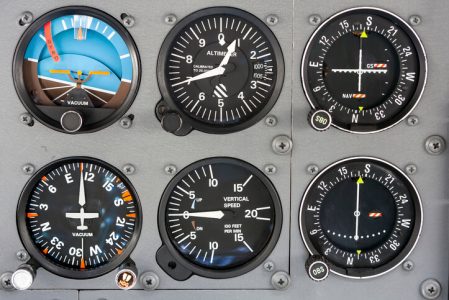Aviation Weather Ends with An Aircraft Caught in the Wires
Recently, a Mooney pilot became entangled in the power lines while attempting a GPS approach and blamed his altimeter. But the weather that night was far from ideal. In fact, it almost appears that the weather was below minimums for the RNAV (GPS) approach he was attempting, with or without an accurate altimeter.
The accident occurred on a dark and stormy night in November 2022. The pilot was flying the RNAV approach into Montgomery County Airpark (KGAI) in Gaithersburg, Maryland. The weather at the time of the approach was 200 foot overcast with about a mile visibility. Additionally, there was a convective SIGMET issued for the area.
At about the same time as the Mooney approach, another pilot diverted to a different airport because the weather at KGAI was “below minimums.” The Mooney pilot elected to continue the approach. The aircraft impacted power lines and the supporting tower structure near the airport and hung suspended 100 feet above the ground in high voltage electric lines for eight hours.
Both occupants survived the crash and rescue, which the pilot blamed on a faulty altimeter. The NTSB investigators say that’s not exactly true. According to the preliminary report, the altimeter was working just fine.
What to Do If an Altimeter Fails
While the evidence of the accident points to a working altimeter, what should you do if your altimeter does fail in flight?
Understanding how the altimeter functions is essential.
The altimeter measures the airplane’s altitude above sea level using air pressure. A malfunctioning altimeter can significantly affect navigation and communication in flight.
If the altimeter fails, notify air traffic control immediately.
Failure to do so can cause communication issues and may require an emergency landing.
An increased workload is another possible outcome of an altimeter failure.
Pilots must rely on other instruments to maintain safe flight, increasing their workload and requiring more attention to be paid to flight instruments.
Alternatives to the primary altimeter must be used.
The secondary altitude instruments available include the airspeed indicator, vertical speed indicator, and GPS altitude. The pilot should use these instruments to maintain proper altitude.
Seeking external assistance or advice from air traffic control is always an option.
They can guide the pilot on how to proceed with the flight.
Pilots without certification to operate the aircraft without a functioning altimeter should avoid flying without one.
This certification is necessary because it ensures that the pilot has received appropriate training and understands the risks and procedures associated with flying without an altimeter.
In the end, the safety of a pilot, passengers, and the aircraft should always be the flight’s main priority. Even with all the technology available, there are still unpredictable things that can make flying so much more challenging. By having knowledge of proper aviation weather protocol and knowing when to put on your brakes, you can stay safe and take off into greater flights in the future. Knowing how to read an altimeter will give you one more tool that you can use to ensure your safe return home as well as stressing the importance of proper preparation before taking off into potentially hazardous conditions.
RELATED READING
RELATED CTS TRAINING










